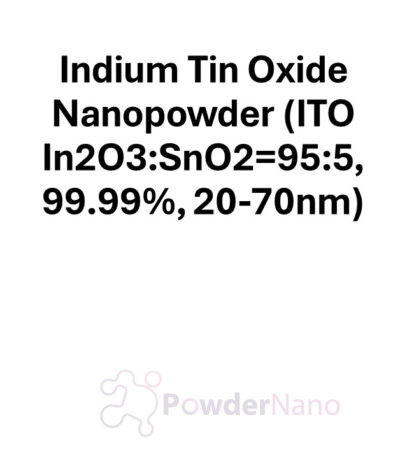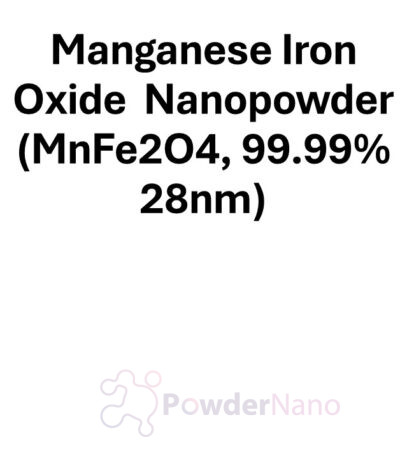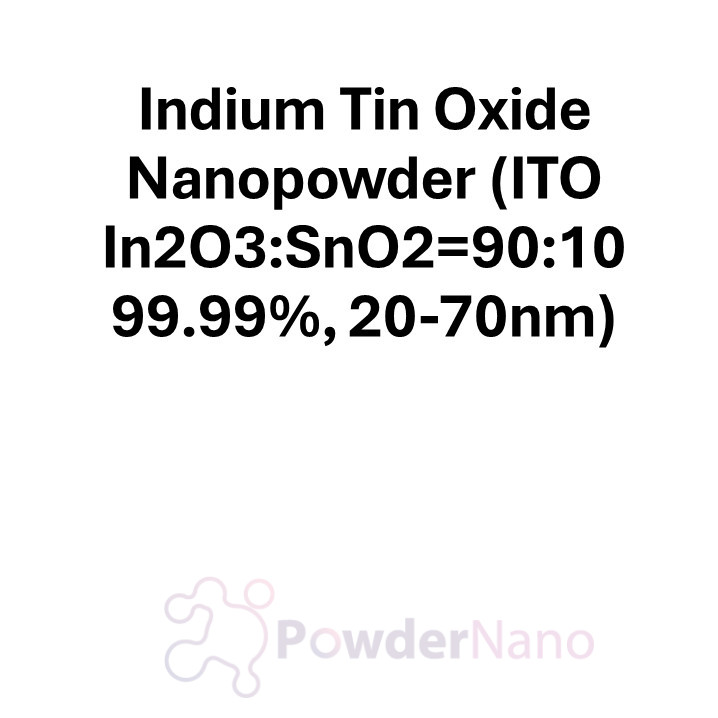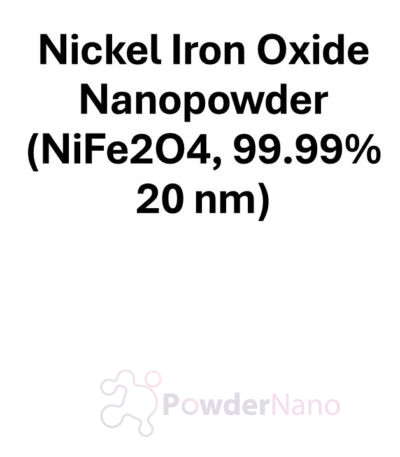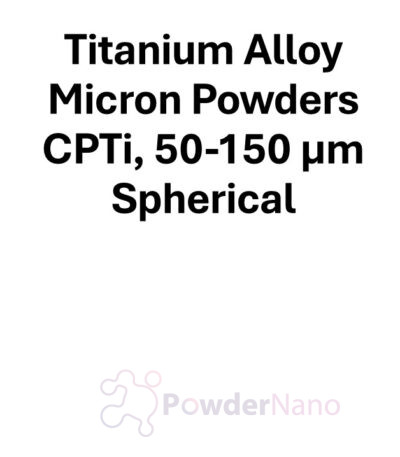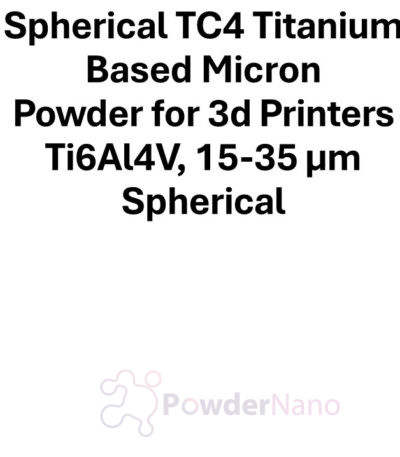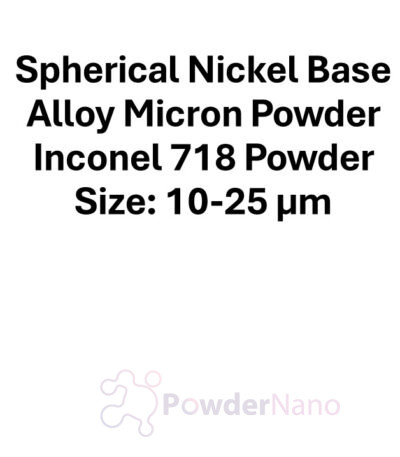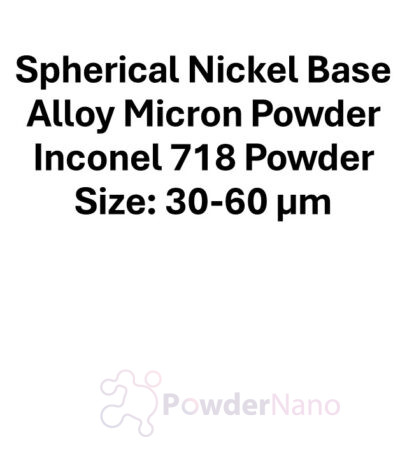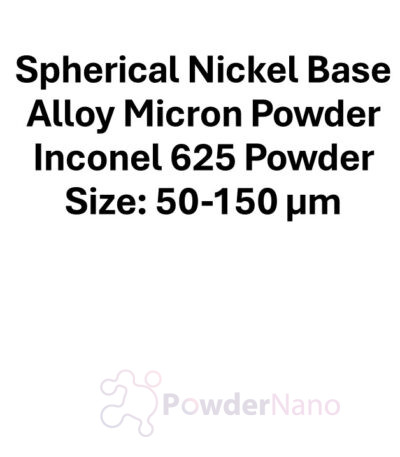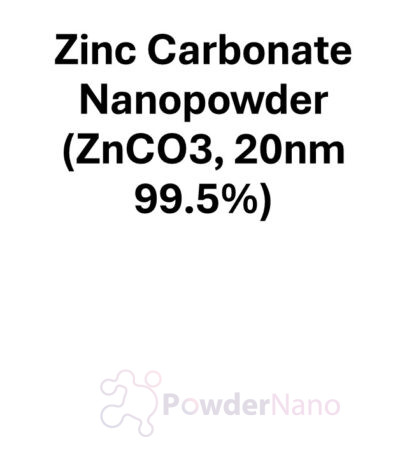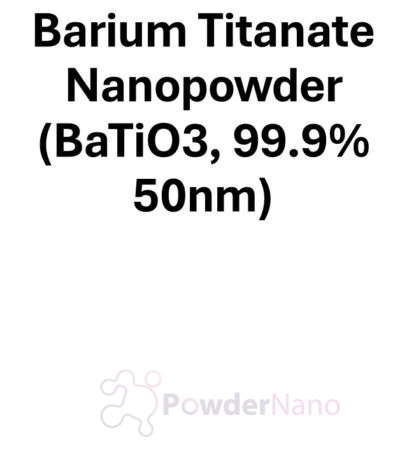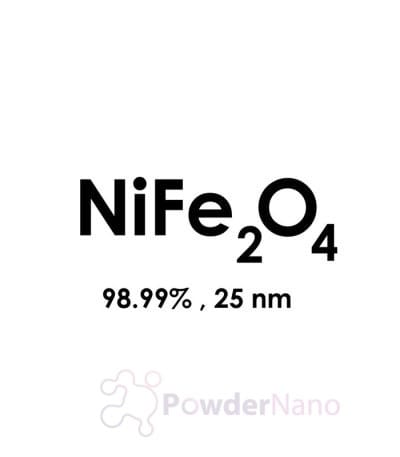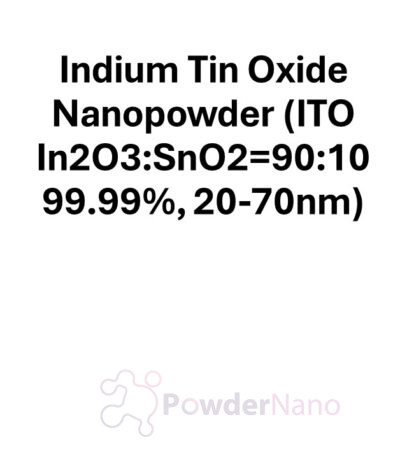Technical Specifications:
- Chemical Composition:
- Indium Oxide (In₂O₃): 90%
- Tin Oxide (SnO₂): 10%
- Purity: 99.99% (ultra-high purity for advanced applications).
- Nanoparticle Size:
- Particle Size Range: 20–70 nm (nanometers).
- Particle Shape: Typically spherical or slightly irregular, depending on synthesis method.
- Surface Area:
- High surface area due to nanoscale size, enhancing electrical and optical properties.
- Optical Properties:
- High transmittance in the visible spectrum.
- Band Gap: ~3.5–4.3 eV depending on preparation and doping conditions.
- Electrical Properties:
- High electrical conductivity and low resistivity due to optimal SnO₂ doping.
- Density:
- Reduced apparent density compared to bulk material due to nanoparticle structure.
Applications:
- Transparent Conductive Films (TCFs):
- Purpose: ITO is widely used in transparent conductive coatings for electronic and optical devices.
- Application: Commonly used in displays (LCDs, OLEDs), touchscreens, solar panels, and electrochromic windows for its combination of high conductivity and optical transparency.
- Solar Cells:
- Purpose: Acts as a transparent electrode material in photovoltaic systems.
- Application: ITO nanoparticles are utilized in thin-film solar cells and dye-sensitized solar cells (DSSCs) to improve light absorption and energy conversion efficiency.
- Touch Panels and Displays:
- Purpose: Provides a conductive and transparent layer in touch-sensitive devices.
- Application: Essential for touchscreens in smartphones, tablets, laptops, and interactive displays.
- Smart Windows:
- Purpose: Enables adjustable light transmittance in energy-efficient glass.
- Application: Used in electrochromic windows for buildings, vehicles, and aircraft to enhance energy efficiency.
- Sensors:
- Purpose: The electrical and optical properties of ITO make it ideal for sensing applications.
- Application: Incorporated into gas sensors, biosensors, and humidity sensors for environmental and biological monitoring.
- LEDs and Optoelectronics:
- Purpose: Serves as a transparent electrode in light-emitting devices.
- Application: ITO nanoparticles are used in LEDs and OLEDs for displays and energy-efficient lighting systems.
- Energy Storage Devices:
- Purpose: Enhances the performance of energy storage systems through improved conductivity.
- Application: Integrated into supercapacitors and batteries to optimize charge/discharge rates and stability.
- Antistatic Coatings:
- Purpose: Prevents static buildup by reducing surface resistivity.
- Application: Used in protective coatings for electronic devices, industrial equipment, and optical lenses.
- Thin-Film Transistors (TFTs):
- Purpose: ITO serves as a gate electrode material in TFTs.
- Application: Essential in advanced electronic circuits and display technologies.
- Photocatalysis:
- Purpose: Acts as a catalyst or support material in environmental remediation processes.
- Application: Used in photocatalytic systems for water treatment, air purification, and hydrogen generation.
Key Benefits:
- High Optical Transparency: ITO provides excellent transmittance in the visible range, essential for displays and solar cells.
- Enhanced Electrical Conductivity: The 90:10 ratio of In₂O₃:SnO₂ optimizes conductivity for advanced electronic applications.
- Nanoscale Advantages: Small particle size improves reactivity, surface area, and performance in coatings, films, and sensors.
- Ultra-High Purity: The 99.99% purity ensures minimal contamination, which is critical for high-performance devices.
- Versatility: Applicable across industries such as energy, electronics, optoelectronics, and environmental technologies.
Indium Tin Oxide (ITO) Nanopowder with a 90:10 ratio is a vital material for transparent conductive films, solar cells, touchscreens, LEDs, and energy storage systems, offering exceptional performance due to its superior optical and electrical properties.
